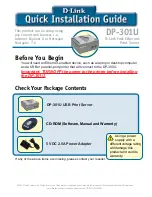
CONFIGURATION GUIDE
–
NEC Express5800/A2040d, A2020d, A2010d, A1040d
NEC Corporation
Rev.2.0
– Oct. 2017
55
2. Memory on the Memory Riser Card (DIMM): Priority/Order of Installation
The priority/order to install DIMM on a Memory Riser Card depends on memory configuration.
Memory Configuration Mode consists of 2;
“Independent Mode” for high performance and “Lockstep Mode”
for high availability
Under each mode, there are 2 features to improve availability further;
“Memory Mirroring” and “Memory Rank
Sparing
”.
2-1. Lockstep Mode
“Lockstep Mode” supports Error Detect/Correct toward 2x DRAM failures (DDDC) by having a pair of memory
defined among 2x memory channels (CH0 and CH1 or CH2 and CH3) operating in parallel.
NOTE:
Cannot mix RDIMM and LRDIMM in a server
Lockstep Mode is a standard setting at the server delivery.
For DIMM installation priority/order, (1) to install larger DIMM first, and (2) to install DIMMs to the sockets in
the priority/order shown in the figure below.
2-2. Independent Mode
“Independent Mode” provides more performance by having 4 memory channels operate independently. This
supports Error Detect/Correct toward 1x DRAM failure (SDDC).
NOTE:
Cannot mix RDIMM and LRDIMM in a server
Lockstep Mode is a standard setting at the server delivery. To use Independent Mode, need to change
the mode from BIOS set-up menu.
For DIMM installation priority/order, (1) to install larger DIMM first, and (2) to install DIMMs to the sockets in
the priority/order shown in the figure below. Otherwise, memory might not be able to be identified correctly.
DIMM Installation Order for Independent Mode (only) /Lockstep Mode (only)
















































